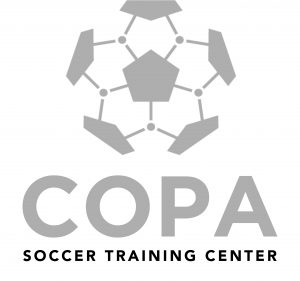Argentina Coaching Education Trip: Part 3

CORDOBA – To most outsiders, Argentina’s second most-populous city may not be as well known as the world-famous Buenos Aires and Rosario, but Cordoba’s soccer culture and history is no less rich than its more famous neighbors.
That’s what more than 30 NorCal Premier Soccer coaches discovered during a two-day visit to the Argentine interior where the city’s two biggest clubs laid out the red carpet for the group in a fashion never seen in NorCal’s numerous coaching education trips.
Not only did Belgrano de Cordoba welcome the group to their training complex just outside of the city Wednesday, but the club tailored all their trainings to show the coaches as much information as possible. Normally, when NorCal is allowed access to a professional outfit, it merely observes the already-planned sessions as they would normally be structured.
However, Belgrano tailored their reserve team training specifically so the coaches from California could experience as much as possible and learn as much as possible during the truncated time they visited. General Manager Enrique Borrelli arranged for the Belgrano reserve team to demonstrate several different training practices they use, spending maybe five minutes on each while fully explaining the rationale behind each exercise before moving onto the next.
The first part of the reserve team training showed how much Belgrano believes in cognitive development activities – for them passing the ball isn’t enough, there has to be an extra layer of complexity that helps the player acquire skills useful in games such as scanning and checking their shoulder.
To start, the players began tossing tennis balls to each other from a yard away while two others stood to their side and constantly held up a different colored object in the players’ peripheral vision. While tossing the ball, each player was tasked with calling out the color of each object to ensure that they were checking their surroundings.
This progressed to the same exercise but with passing the soccer ball using their feet before the group played a game of 3v3 while teammates walked around the field holding up the same objects. During this phase, players were instructed to constantly call out any color they saw while still playing the game. The club nicknamed El Pirata – The Pirate – assigns these tasks two to three times a week in order hopefully develop players with superior vision and field awareness.

Overall, NorCal’s coaches were presented with a plethora of cutting-edge drills, but also were given the opportunity to step in themselves and try their hand at training an exercise with the reserve team players.
PDP coaches and Spanish speakers Ismael Echeverria, Eric Franco, Gavin Glinton, and Jesus Mata each coached the reserves for a few minutes, gaining valuable experience working with a group of kids in a culture none had experienced prior to this trip.
“That was a lot of fun, when you get an opportunity to coach individuals who are at a high level, with the intensity, you don’t have to motivate as much, which is cool to see,” said Napa United and PDP goalkeeping coach Eric Franco. “I kind of adapted the session that they were doing, making it a little bit more reactive. All the boys really enjoyed it. I felt that it was a good opportunity for me to also interact with the coach and get a better idea of what they’re looking for in their goalkeepers where they don’t want them to just be shot stoppers but overall students of the game.”

While the original sessions and the opportunity to coach players from another country certainly resonated among those in attendance, even the little things at Belgrano made an impact on NorCal, especially the fitness drills that the club ran.
While there were some differences in the types of movements in the fitness sessions, the demeanor and desire of the players stood out in Belgrano, just as they had in every other visit of the trip up to this point.
Coaches didn’t need to yell at players to motivate them. There weren’t any taskmasters standing over the young athletes asking them to do something they didn’t want to do. Instead, the aspiring professionals essentially ran fitness themselves. All the coaches had to do was give the captain a stopwatch and the rest took care of itself – the players here are so hungry to succeed that they don’t need the extra motivation to do their best.
“Here in Argentina I’ve learned that regardless of not having the best facilities, best equipment, or advanced technology, it doesn’t matter,” said Pajaro Valley coach Paulina Gonzalez. “My takeaway is the players’ drive and ambition. They are hungry and sometimes the best thing isn’t to already be the wolf on top of the mountain, but the one constantly climbing to get there.”
After the Wednesday morning sessions, Belgrano lent their field to the coaches to play a game against each other before NorCal visited Estadio Mario Kempes, the facility that hosts all the big games in the city, especially those between rivals Belgrano and Talleres.
That evening, the group returned to Belgrano to observe youth trainings relevant to ages they coach back in California. The 30-plus were split into small groups and tasked with watching practice, taking video and notes, and creating a presentation on what they witnessed for the rest of the coaches before the end of the trip.
Finally, Belgrano closed Wednesday with a brief overview of each age group, each department, and what kinds of practices the club uses to help develop the best players possible.

While Thursday’s visit at Talleres didn’t last as long, it wasn’t any less impactful for NorCal, who arrived at the club’s pristine training complex for a half day visit before taking the nine-hour bus ride back to Buenos Aires.
At Talleres, the coaches were also given exclusive access to a reserve team training before watching those who dreamed of being selected for that high of a level one day.
NorCal then packed into an area usually reserved for press conferences where Talleres leadership projected their vision for the club.
The higher ups from the 1999 CONMEBOL Cup explained their core values, namely that all their teams should be dynamic and intense, play offensive soccer, immediately press after losing the ball, and dominate the rival with smart positioning of the players and ball.
And while several other clubs in Argentina haven’t been on the forefront of the latest technology, Talleres showed off their affinity for it through six different video clips and a demonstration of a club-developed app used to track the progress of each player.
Not only do Talleres use video to correct behaviors for their youth players in later trainings, but sometimes they do during the same game – the club showed NorCal an example of a player making a mistake in the first half of the game, then correcting it at halftime, leading to a second half goal.
The second Cordoba club the coaches visited was able to add this level of innovation while not sacrificing any of the work ethic and desire shown by their persistent youngsters.
“I think that if there’s one thing that I’ll take back from the last few days here in Cordoba, it would be more about the focus and the intensity of the trainings,” Franco said. “It was something of a relaxed intensity and what I mean by that is that it wasn’t a crazy amount of repetition all over the place but there was a very specific purpose to their trainings, there was a methodology in their training. Some days they went progressive, more power work vs. days where they were going to focus more on distribution or aerial work. It’s all focused on their gameday so if they’re playing on Saturday or on Sunday, they’re going to break down their training session from that point.”













